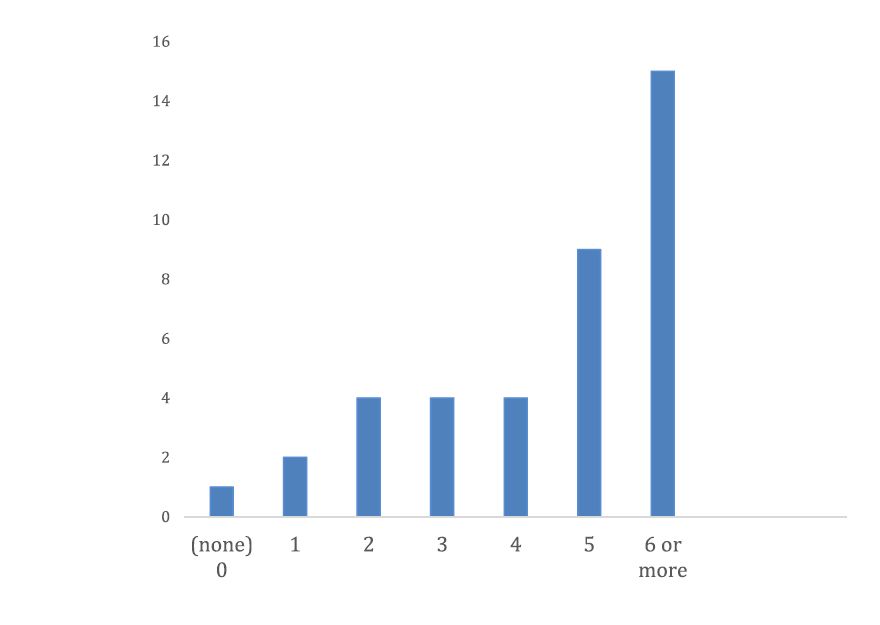Knife crime:
assault data can help forecast
fatal stabbings

Knife crime data from a 12-month period could be used to help forecast the London neighbourhoods most likely to suffer a fatal stabbing the following year, according to latest research.
Cambridge criminologists worked with a Metropolitan Police detective to show that the number of assaults resulting in knife injuries over one year correlated with an increased risk of deadly knife crime in the same small areas the next year.
DCI John Massey from the Met’s Homicide Command manually trawled through thousands of knife crime records to pick out and “geo-code” incidents where people were stabbed and cut but survived during the 2016/17 financial year.
This may be the first dataset of non-fatal knife assault “hotspots” in the UK. Current crime statistics do not distinguish between incidents without injury – displaying of knives during robberies, for example – and those where knives have wounded.
Massey found 3543 knife assaults had occurred during the 12-month period: a ratio of 66 non-fatal stabbings for every knife homicide that year.
Each assault was coded to one of London’s 4835 local census areas – some as small as a few football fields – and compared to the locations of the 97 homicides from the following 2017/18 financial year.
Some 2781 areas, over half of London, had no knife assaults at all in the first year. Of these areas, 1% saw a homicide in year two.
Of the 41 neighbourhoods that had six or more injuries from knife assaults in the first year, 15% went on to suffer a homicide the following year.
The researchers argue that this reveals a large increase in homicide risk: these top assault hot spots were 15 times more likely to suffer a knife homicide the following year than all areas – the majority of London – with no knife assaults.
They say that data on knife assaults provide a “consistent pattern” of greater knife homicide risk the next year. Census areas with two to four assaults had around a 4% risk of homicide in year two, and those with five assaults had a 9% risk. Six or more assaults equated to a 15% risk.
The researchers suggest that with the right technological approach, police could receive automated daily updates of homicide risk based on the latest data – helping to guide patrol allocations. The study is published today in the Cambridge Journal of Evidence-Based Policing.

Horizontal: number of knife assaults per local census area during 2016/17. Vertical: Percentage of those local census areas with a knife homicide the following year.
Horizontal: number of knife assaults per local census area during 2016/17. Vertical: Percentage of those local census areas with a knife homicide the following year.
“If assault data forecasts that a neighbourhood is more likely to experience knife homicide, police commanders might consider everything from closer monitoring of school exclusions to localised use of stop-and-search,” said study co-author Prof Lawrence Sherman from the University of Cambridge.
“Better data is needed to fight knife homicide. The current definition of knife crime is too broad to be useful, and lumps together knife-enabled injuries with knife threats or even arrests for carrying knives.”
“Police IT is in urgent need of refinement. Instead of just keeping case records for legal uses, the systems should be designed to detect crime patterns for prioritising targets. We need to transform IT from electronic filing cabinets into a daily crime forecasting tool,” he said.
However, Sherman and colleagues caution that solely focusing on assault hotspots is not a “panacea”. The 41 top hotspots in the study contained only 6% of the following year’s total knife deaths.
The new study was co-authored by DCI Massey as part of his Master’s thesis research at Cambridge’s Institute of Criminology, where he worked with Sherman and his colleague Dr R. Timothy Coupe.
“These findings indicate that officers can be deployed in a smaller number of areas in the knowledge that they will have the best chances there to prevent knife-enabled homicides,” Massey said.
No single area in the 2017/18 financial year had more than one fatal stabbing. However, 69% of the knife homicides occurred in census areas where at least one non-fatal knife assault had taken place the year before.
The study’s authors say the last decade of deadly knife crime has been a “moving target”. The research suggests little repetition of homicide location. In the ten years up to 2018, there were 590 knife homicides across London spread over 523 different census areas.
The researchers write that geo-coding annual knife assaults to a census area provides a reliable – if far from perfect – basis for forecasting knife homicide.
Added Sherman: “When combined with intelligence-gathering on the streets, this form of data analysis could enhance the effectiveness of scarce resources to create a new and more powerful preventative toolkit. Our study is just the first step.”
Study reference:
Massey, Sherman and Coupe. Forecasting Knife Homicide Risk from Prior Knife Assaults in 4835 Local Areas of London, 2016-18. Cambridge Journal of Evidence-Based Policing; 15 April 2019; DOI: 10.1007/s41887-019-00034-y
